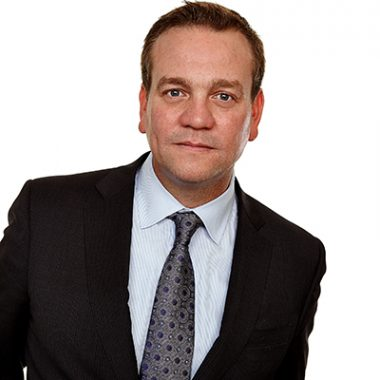Financial services is a demanding industry, and managing the day-to-day can be stressful, to say the least. When you’re constantly in motion, working both in your business and on it, taking care of yourself may be the last item on your to-do list. Before you know it, you’re staring down a case of financial advisor burnout, which is frequently characterized by feeling exhausted and overwhelmed. Heading off burnout before it happens can lead to a healthier you and a healthier business.
Add new clients and AUM at your desired pace with SmartAsset’s Advisor Marketing Platform. Sign up for a free demo today.
7 Ways to Avoid Financial Advisor Burnout
Burnout is not something that happens all at once. It’s a phenomenon that more often than not develops over time and is linked to heavy workloads, increased stress, professional conflicts and overcommitment that comes at the expense of oneself. Avoiding burnout as a financial advisor requires a conscious effort to keep yourself on your priority list. Here’s how to do so.
1. Recognize the Warning Signs
It’s difficult to avoid burnout if you’re unfamiliar with the symptoms. Common job burnout indicators include:
- Lacking energy or focus when approaching work-related tasks
- Feelings of detachment from your colleagues or clients
- Self-doubt concerning your ability to perform your job well
- Sluggishness or a reluctance to go to work
- Decrease in job satisfaction
Burnout can trigger physical changes, too. Exhaustion is typical, but it goes beyond just feeling tired. For example, you may be sleeping even less than usual or experience headaches and stomach problems more often.
Over the long term, chronic burnout can lead to serious health issues, including an elevated risk of heart disease and diabetes. That’s why it’s so important to understand what burnout looks and feels like.
2. Set Realistic Goals
You’ve likely set some impressive goals for your business and, in a way, that’s a good thing. Goals help keep you motivated, but you could be setting yourself up for burnout if you’re constantly chasing unreachable standards.
Sit down and ask yourself what’s required from you in order to reach your goals, both in terms of your time and mental energy. Weigh that input against your anticipated outcome, and evaluate if what you have to do to hit your goals is worth what it may cost you health-wise. Consider setting smaller goals that are more realistic and doable, but still allow you to feel like your business is moving forward.
If you can’t minimize your goals, you could try finding ways to reduce the amount of effort you need to contribute. For example, if one of your goals is acquiring new clients, you might partner with an advisor marketing platform to connect with leads. You can match with prospective clients without having to do a lot of heavy lifting (or stressing) to promote your firm.
3. Learn to Say “No”
While “no” is simple to spell, it can be difficult to say when you’re focused on serving client needs and scaling your business. If you want to avoid financial advisor burnout, however, you have to get comfortable saying “no” when the situation warrants it.
For example, you may be invited to conferences and other professional events that offer opportunities to showcase your services, network with other financial advisors or meet with prospects. It’s easy to feel pressured to attend everything, but that’s a fast way to overextend yourself. A selective approach can help you narrow down which events are likely to be most valuable so your time is better spent.
It’s also important to know how to set appropriate boundaries with clients. They should feel reassured that you’re there to help them, with reasonable expectations. That means having clearly defined working hours and rules for communication that allow you to stay connected to clients, without feeling tied to them 24/7.
4. Automate and Delegate

Automation and delegation are burnout avoidance tools that many advisors may under-utilize. When you automate certain tasks and delegate others, you can ease some of the weight on your shoulders, without leaving your business in a lurch.
Some of the client-focused tasks you could automate using tech tools include:
- Scheduling
- New client onboarding
- Document signing
- Email and social media marketing
- Risk profiling
- Portfolio rebalancing
Automation and delegation can also help lighten your load when it comes to behind-the-scenes functions. For example, compliance software can help you stay aligned with SEC rules for things like marketing, recordkeeping and cybersecurity. Back office services for advisors, meanwhile, can handle things like bookkeeping and accounting, human resources tasks and IT-related functions.
5. Put Yourself on the Agenda
You may use meeting agendas to plan out your time with clients, but applying the same principle to yourself can also help you avoid burnout. So what does it mean to put yourself on the agenda?
It includes things like:
- Setting aside a window of time each day to rest and reflect
- Getting regular exercise and developing healthy sleep habits
- Prioritizing a healthy diet
- Exploring your interests and/or developing new hobbies
- Journaling your thoughts and feelings
- Regularly checking in with yourself to assess how you’re feeling physically and mentally
If this seems difficult, start small. Find 15 minutes in your schedule each day when you can put down your phone or step away from your laptop. Add that block of time to your calendar and commit to showing up for it every day, the same way you commit to client meetings.
You could also try keeping a log of everything you do each day, from the time you wake up until you go to bed. Do this for a couple of weeks, then review your log to assess where your time goes. Compare the number of hours spent working vs. living to see how closely balanced the two are. If the gap is wider than you’d like, consider what you could change, either through automation, delegation or just saying “no,” in order to have more time to enjoy life.
6. Surround Yourself With Support
Avoiding burnout as a financial advisor isn’t something you have to try to do alone. Having a supportive team in place can help you stay accountable and avoid hitting a wall.
Your support team may include colleagues, your mentor, your spouse or partner, as well as your friends and family. If you don’t have a wide circle of support, you may consider reaching out to a therapist who can listen to your concerns about burnout and help you develop strategies for avoiding it.
7. Take Breaks
Being “on” in your business all the time can put you on a fast track to burnout. Periodic breaks can give you the space you need to recharge.
How long does a break need to be? It depends on how far along you are on the burnout scale. If you’re not taking weekends off, try starting there. Then, consider how you might be able to swing a longer break of one to two weeks at least once a year.
When you’re on one of these breaks, remember your boundaries. If you’ve automated and delegated to your staff and set clear expectations with your clients, your only focus should be on enjoying your time away so you can come back refreshed.

Client Acquisition Simplified: For RIAs
- Ideal for RIAs looking to scale.
- Validated referrals to help build your pipeline efficiently.
- Save time + optimize your close rate with high-touch, pre-built campaigns.

CFP®, CEO
Joe Anderson
Pure Financial Advisors
We have seen a remarkable return on investment and comparatively low client acquisition costs even as we’ve multiplied our spend over the years.
Pure Financial Advisors reports $1B in new AUM from SmartAsset investor referrals.
Bottom Line

Financial advisor burnout is real, and if it happens to you, you could be feeling the side effects for months or even years. Developing a plan of care can help you avoid becoming burned out so your business continues to thrive.
Build a Better RIA
Drive growth with automation, not headcount using the all-in-one advisor marketing platform.

Tips for Growing Your Advisory Business
- Investors have a multitude of choices when deciding where to seek professional financial advice. If you’re looking for a way to make a direct connection with prospects, you might consider working with an advisor marketing platform like SmartAsset AMP. SmartAsset AMP (Advisor Marketing Platform) is a holistic marketing service financial advisors can use for client lead generation and automated marketing. Sign up for a free demo to explore how SmartAsset AMP can help you expand your practice’s marketing operation. Get started today.
- Good marketing can influence your success, and automation can help you increase your visibility, without taking up too much of your time. Email drip campaigns, for example, are an effective way to nurture leads. You can batch-draft emails and schedule them to send on a specific date and time. Scheduling email blast campaigns is another way to grab prospects’ attention and nudge them toward a specific call to action.
Photo credit: ©iStock.com/fizkes, ©iStock.com/Wasan Tita, ©iStock.com/ValuaVitaly
